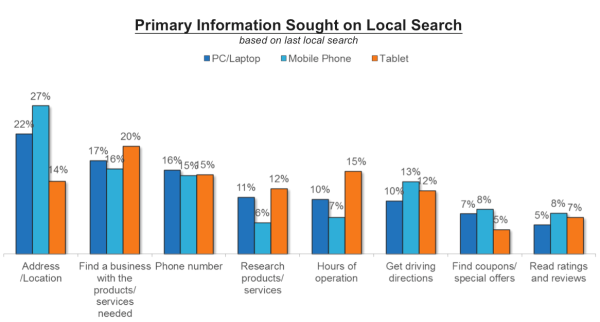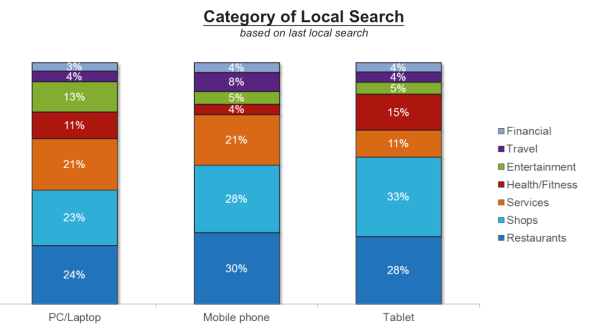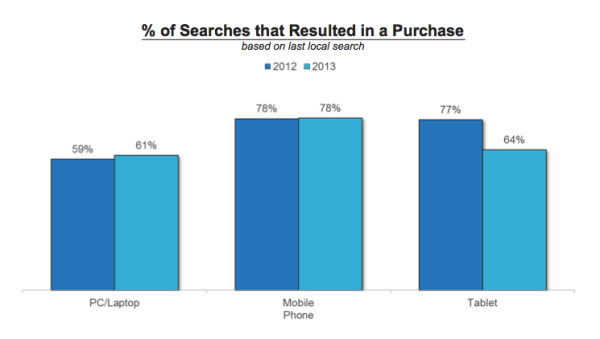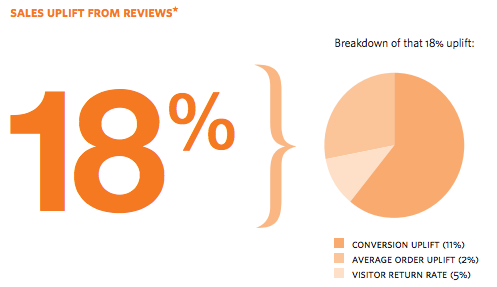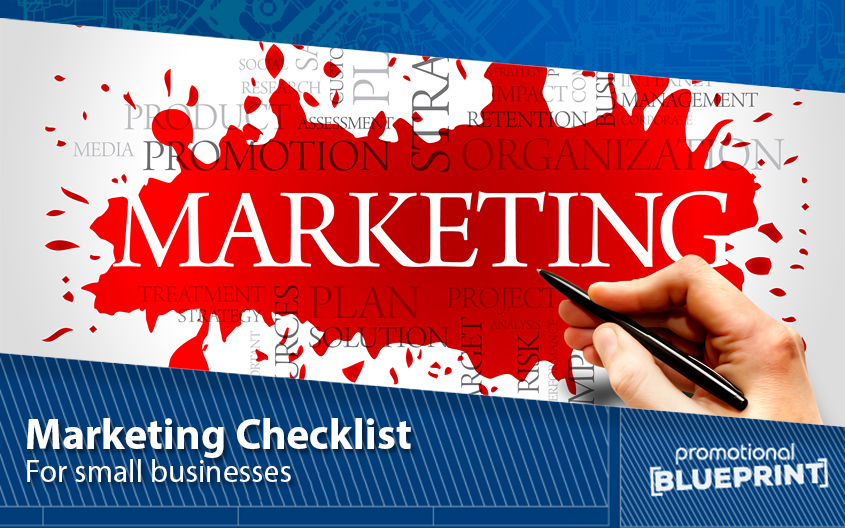
Marketing for small businesses or brick and mortar businesses is changing with the times and that is why we’ve put together our ‘marketing checklist for small businesses’ as a guide.
Even if your business does not sell anything online, you still need to market online and have an online presence in the search engines. If you are wondering why, the answer is the combination of both mobile and local search and the proliferation of smartphones. Your customers are searching for you online under any circumstances. A study has shown that almost all consumers (97%) use online media to shop locally.
Consumers are searching for businesses they are interested in on a daily basis. If they cannot find your business during those searches, you are losing that business to your competition that they do find online. Maintaining an online presence also helps your online reputation and promotes word of mouth marketing through online consumer reviews and social chatter. This article will cover the details on the importance of online marketing for offline businesses and show you how to get started with a marketing checklist for local businesses.
It’s All about Being Found
Google releases an annual website with mobile search statistics. It is called TheMobilePlayBook.com. You can visit that website to get more in depth examples of how businesses are using local search or mobile applications to attract and engage consumers. The website shows statistics from results of local based searches.
- 94% of smartphone users search for location information
- 51% of local searches results in a store visit
- 48% called a store after performing a search
- 29% made a purchase in-store very soon after searching
- 80% of mobile searches resulted in a store visit within 5 hours
- 85% of mobile searches lead to phone calls to the store within 5 hours
Please note that some of these searches may not have even been on a mobile device or could have been from home before leaving to search out a local business. More consumers even use their smartphone or tablet for searches at home or work instead of a laptop or desktop computer out of convenience. Many switch back and forth to computers or different devices.
- 90% of consumers move between devices to complete a task
- 65% of multi-screen consumers report that they began the shopping process from a smartphone
- 84% of all multi-screen shopping experiences included mobile as either their 1st or 2nd interaction.
As you can see, it is all about being found during these local searches. An updated research study from comScore on local-mobile search shows that 78% of local-mobile searches result in offline purchases.
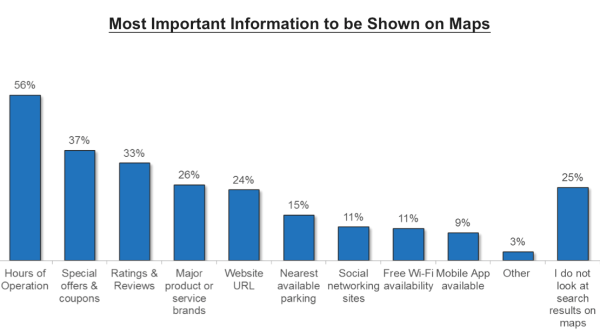
Graph Images Source: comScore, Neustar Localeze, 15 Miles
Reputation Management through Online Reviews
Once you venture into the online space (voluntarily or involuntarily) it also means that online consumer reviews will become a factor for your business. Online reviews are going to happen whether you embrace the medium or not. Therefore, getting involved in setting up online review sites, monitoring, responding, and delivering an excellent customer experience are all the major components of converting business in this area. According to SitePoint, 90% of consumers say positive online reviews influence their buying decisions while 86% said buying decisions were influenced by negative online reviews. Consumer reviews are at their best when they are positive; however, negative reviews are not all bad and do not always deter consumers from your business. Negative reviews add credibility to your reviews overall because no one expects or believes that every customer is always satisfied. In fact, it gives your company a chance to show that you care by responding to a negative review and fixing a problem. Statistics from Reevoo prove this because bad reviews actually improve conversions by 67%. Statistics from E-consultancy regarding online reviews:
- 63% of customers are more likely to purchase from a site that has online reviews.
- Consumer reviews are trusted 12X more than manufacturer product descriptions.
- Online reviews increase sales by 18%.
Source: E-consultancy
Online Marketing Checklist and Action Items for Your Business
Changing with the times is the mark of a successful business. The world is always changing around us, if we do not embrace change, the world will pass us by and stagnant businesses are doomed to fail. Developing an online presence is not as tricky and complicated as you might think. However, there are a few key points that must not be missed. Getting your website right the first time is imperative as is making mobile search initiatives a priority. Here are your action items:
- All websites today must have a responsive design. This means that it can be easily viewed and navigated on any size screen (small or large). Google’s TheMobilePlaybook.com says 57% of users say they would not recommend a business with a poorly designed mobile site. Furthermore, 40% have turned to a competitor’s site after a bad mobile experience.
- Focus enough attention to your mobile site. Do not make the mistake of just miniaturizing your desktop design. Your mobile website should be fully optimised for mobile search.
- Emphasis on mobile must come from the top. All branches and departments of your company must embrace mobile and recognise the importance of having a mobile friendly presence. Build mobile accountability into your organisation.
- Fill out all of your business’ online listings. Research showed that 70% of small business owners said they don’t have time to manage listings on all of the sites that consumers use. Taking an hour a week to set up and maintain listings is all it would take. It is as simple as filling out data such as your address, phone number, hours of operations, specials or coupons, and information about your products or services. 23% of small businesses have a good sense of how listings drive traffic to their business. After reading this article, you are way ahead of the curve!
- Consider implementing a call to click campaign as part of your marketing strategy. Google conducts 30 million Click-to-Calls each month. Advertisers have seen a 6 % to 8% lift in click thrus for campaigns with the added Click-to-Call feature.
- Implement mobile coupons to get increased attention. Mobile coupons get redeemed 10X more than traditional coupons and 3X the clicks vs. your competitors who are not offering coupons. This gives you another serious advantage over your competition.
- Once mobile is a viable part of your business expand on mobile search experience and in-store mobile engagement. Developing your own mobile application should be a goal for companies that look to capitalise on mobile consumers. Recognise that many mobile searches are likely being conducted while customers are in your store.
- Service related businesses such as restaurants, salons, and hotels should enable online reservations. It’s no secret that travel and hotels are booked online but restaurant reservations and salon appointments can also be increased using online tools, websites, or applications that enable booking or reserving online.
- Develop ways to make it easy for consumers to leave online feedback and reviews. Enable online reviews through your website, on your Google listing, online review sites, and social channels such as Facebook, Foursquare, and Yelp.
- Monitor what consumers are saying about you in online reviews and social channels. Tools are available for monitoring what people are saying about your company and your brand online. Utilise those tools and react quickly and appropriately to both positive and negative feedback.
You may also like: Top 10 Marketing Strategies for Small Business
You may also like: A to Z of Online Marketing Terms : Everything You Need To Know



